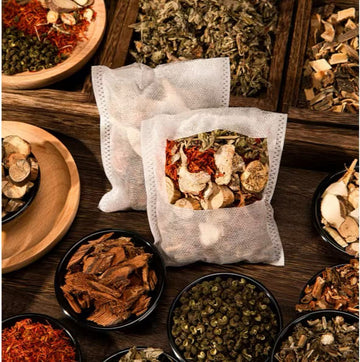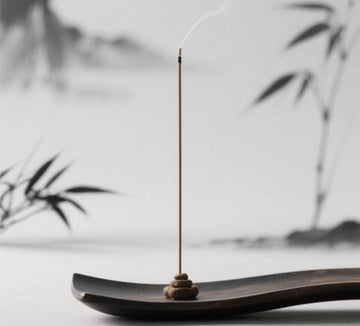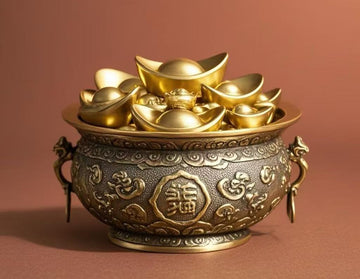In today’s fast-paced society, stress and mental fatigue have become an almost universal experience. Amid this growing need for emotional balance and relaxation, the ritual of burning incense has reemerged—not merely as a cultural or religious tradition, but as a popular tool for wellness and self-care. But as the demand for incense increases, so does the concern: What is the healthiest incense to burn?
This question is not trivial. Many forms of incense on the market contain synthetic ingredients that, when burned, can pose serious health risks. On the other hand, natural incense—especially when used properly—can offer a calming atmosphere, spiritual upliftment, and even physical wellness benefits.
This article explores what makes an incense healthy, what to avoid, the proper ways to burn incense, and how natural incense like agarwood (oud), sandalwood, and traditional Chinese herbal blends offer a safe and enriching alternative.
Why Incense Use Requires Caution
The soothing curl of aromatic smoke may seem harmless, but not all incense is created equal. The primary concern lies in the ingredients. Broadly speaking, incense can be classified into two major categories:
-
Synthetic (Chemical) Incense
-
Natural (Plant-Based) Incense
Understanding the difference is essential for anyone who uses incense for health, meditation, or spiritual rituals.
The Danger of Synthetic Incense
Synthetic incense, often found in mass-produced sticks used in public restrooms, temples, or budget-friendly home fragrance kits, is composed of artificial fragrances, chemical binders, and synthetic dyes. When burned, these components can release toxic volatile organic compounds (VOCs) such as:
-
Benzene
-
Formaldehyde
-
Polycyclic aromatic hydrocarbons (PAHs)
-
Phthalates
These substances are known carcinogens and respiratory irritants, and their long-term exposure has been linked to asthma, headaches, hormonal disruptions, and even certain cancers. Therefore, the frequent burning of chemically manufactured incense sticks, especially in enclosed spaces, can become a health hazard rather than a therapeutic aid.
What Defines a Healthy Incense?
A healthy incense is one that is made entirely of natural, non-toxic, and sustainably sourced ingredients, and burned under well-ventilated and moderated conditions. The most beneficial incense types generally meet these criteria:
-
100% natural plant materials (e.g., resins, woods, herbs, flowers)
-
No artificial chemicals or synthetic perfumes
-
Slow-burning, low-smoke composition
-
Produced using traditional, hand-rolled techniques
-
Free from charcoal or artificial binders
Natural Incense: The Healthiest Options to Burn
Let’s take a closer look at the healthiest and most revered forms of natural incense:
1. Agarwood (Oud / 沉香)
Often regarded as the "King of Incense," Agarwood is formed when Aquilaria trees become infected with a specific mold, triggering the production of fragrant resin. Its spiritual, medicinal, and therapeutic values are well-documented across cultures, from Chinese emperors to Arab sultans.
Benefits:
-
Promotes relaxation and sleep
-
Soothes anxiety and emotional stress
-
Enhances spiritual awareness
-
Acts as a gentle sedative
Burning agarwood in the evening helps calm the nervous system, making it ideal for pre-bed rituals. It carries a cooling, profound aroma that lingers gently without overwhelming the senses.
✅ You can find healthy, natural agarwood incense at Memoricall’s incense collection, crafted for both spiritual and physical harmony.
2. Sandalwood (檀香)
Sandalwood has been used for thousands of years in Ayurvedic medicine and Buddhist rituals. When burned, it releases a warm, creamy, and soft scent that is immediately grounding.
Health Benefits:
-
Acts as a mild stimulant to increase focus
-
Supports meditative states
-
Has anti-inflammatory and anti-depressant properties
-
Clears negative energy in a room
Ideal for morning use or during yoga and mindfulness practice, sandalwood incense is known for improving mental clarity.
3. Herbal TCM-Inspired Incense
Some of the healthiest incense options are based on Traditional Chinese Medicine (TCM) formulations that incorporate herbs like:
-
Goji Berries (枸杞) – boosts immune function
-
Ginseng (人参) – invigorates qi (life energy)
-
Red Dates (红枣) – improves blood circulation
-
Saffron (藏红花) – calms the mind and supports hormonal health
These formulas are crafted for holistic wellness, offering benefits for the body, mind, and spirit. Because they use real medicinal herbs and no synthetic elements, their smoke is gentle, beneficial, and deeply rooted in ancient Chinese wisdom.
Proper Incense Usage: Tips for Health-Conscious Users
Even natural incense can be harmful if misused. Here’s how to enjoy incense safely and get the most out of its benefits.
🔹 Ventilation Is Key
Burn incense in a well-ventilated room to ensure the smoke does not stagnate or accumulate excessively. Avoid burning in sealed or small spaces.
🔹 Limit the Quantity
Even healthy incense should be used in moderation. Burning one or two thin sticks per day is generally sufficient.
🔹 Time It Right
Different incense types have different ideal usage times:
| Incense Type | Best Time to Use | Effects |
|---|---|---|
| Agarwood (Oud) | Evening / Night | Calms the mind, aids sleep |
| Sandalwood | Morning / Daytime | Refreshes, boosts concentration |
| Herbal TCM Incense | Afternoon / Night | Replenishes qi, restores balance |
🔹 Let It Breathe Before Inhaling
When first lighting a stick, wait a few minutes before deeply inhaling the scent. Allow the harsh initial smoke to settle.
🔹 Don't Burn Continuously
Avoid burning incense one stick after another. Take breaks. Think of incense like tea or wine—meant to be savored, not consumed in excess.
Spotting Healthy vs. Unhealthy Incense
Here’s how you can identify whether the incense you’re buying is genuinely healthy:
| Feature | Healthy Incense | Unhealthy (Synthetic) Incense |
|---|---|---|
| Ingredients | 100% natural woods, herbs, spices | Chemical binders, synthetic fragrances |
| Aroma | Subtle, soothing, earthy | Sharp, artificial, often overwhelming |
| Color | Earth-toned, natural brown or tan | Brightly colored (red, green, etc.) |
| Smoke Output | Light, thin smoke | Thick, choking clouds |
| Burn Time | Slower, longer burn | Fast burn, intense heat |
| Label Transparency | Lists real ingredients | Often lacks ingredient list |
Why Natural Incense Is Gaining Popularity
Today’s urban professionals face an environment of constant stimulation, emotional fatigue, and spiritual disconnection. Burning natural incense like agarwood or sandalwood provides a ritual of stillness, helping individuals reclaim inner peace.
As more people prioritize clean air, sustainable practices, and emotional well-being, there’s a clear shift away from mass-produced chemical incense toward handcrafted, authentic and health-positive incense.
Brands like Memoricall are leading this shift by offering incense made only with premium-grade natural materials, free from harmful additives.
Choose With Intention
So, what is the healthiest incense to burn? The answer lies not only in the ingredients but also in how you use it, how often you burn it, and how your body responds. The best incense will:
-
Be 100% natural and toxin-free
-
Support your mental clarity and emotional balance
-
Complement your daily wellness ritual
-
Be used mindfully in moderation
From agarwood’s meditative calm to sandalwood’s invigorating clarity, and TCM-inspired blends that nourish the body and mind, healthy incense is both an art and a science. It offers more than fragrance—it provides a gateway to stillness, healing, and reconnection.
To explore safe, artisanal incense options designed with health in mind, visit Memoricall's incense collection.









